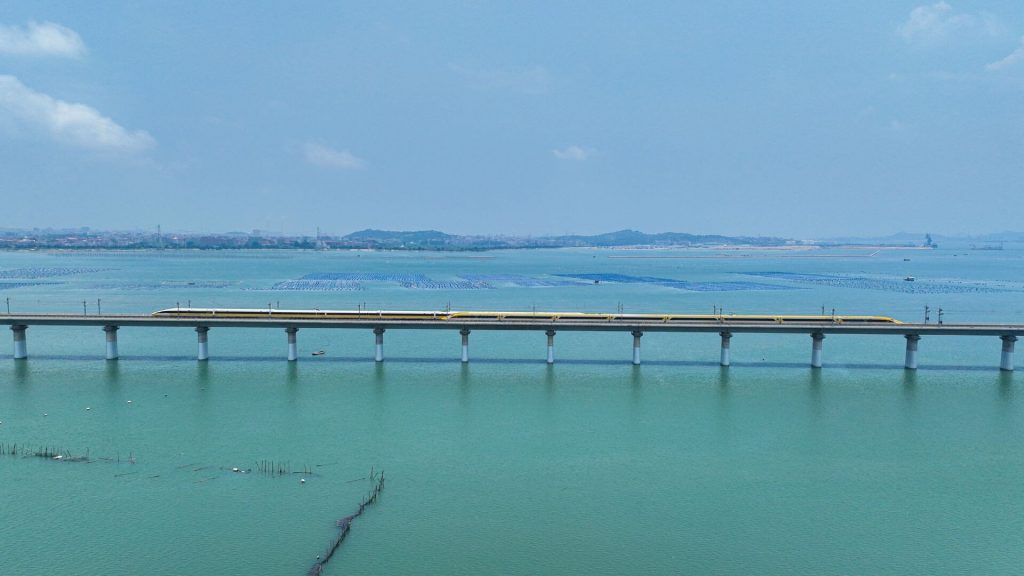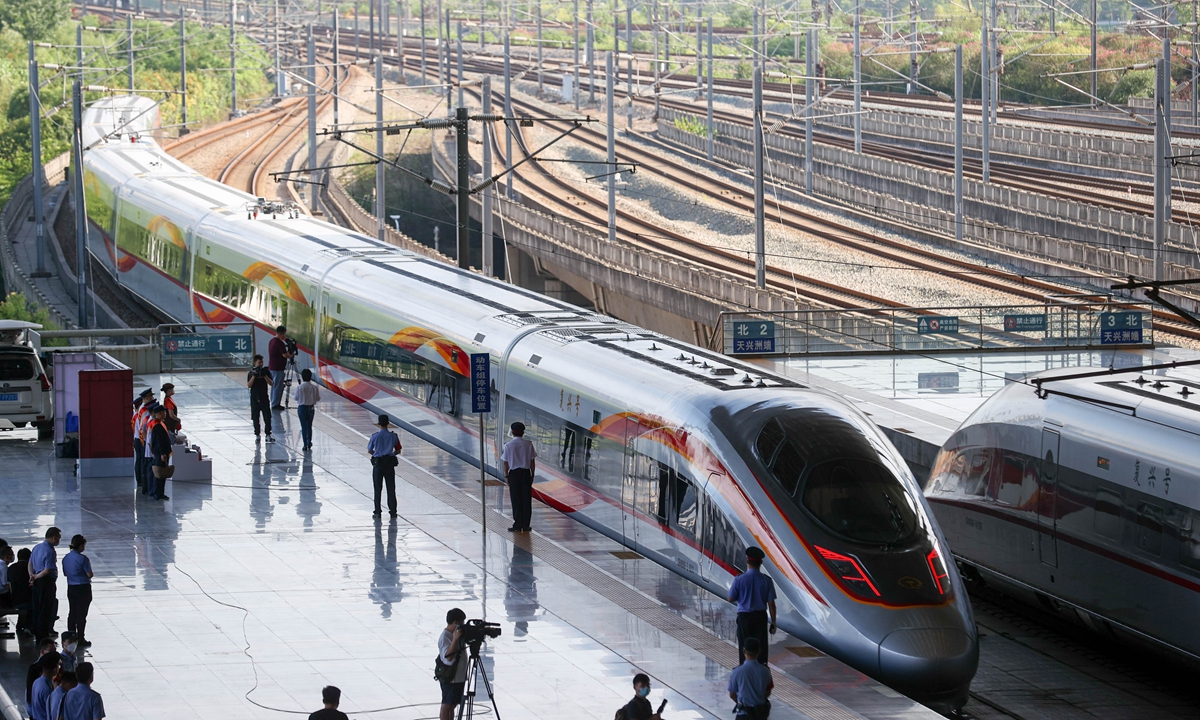China’s next-generation high-speed train has achieved a new milestone. According to the EurAsian Times, it reached a remarkable speed of 281 miles (453 km) per hour during a test run. When two trains move in opposite directions, their relative speed reached a mind-blowing 553 miles (891 km) per hour.
High-speed rail systems offer an efficient way to transport people and goods between destinations. As countries strive to reduce carbon emissions, electrified and energy-efficient trains provide eco-friendly alternatives to air travel.
By increasing speeds, trains can significantly reduce travel time compared to other modes of transportation. For example, a train traveling at 248 miles (400 km) per hour could cover the distance between Beijing and Shanghai in just 2.5 hours, similar to a typical flight.

China boasts the world’s largest railway network and operates a magnetic levitation (maglev) train service in Shanghai. This technology uses magnets to lift the train above the rail, reducing friction and enabling speeds of up to 310 miles (500 km) per hour.
While maglev technology is not yet widespread across China, the country aims to enhance the speed of its trains on existing infrastructure. The China Railway 450 Technology Innovation Project, outlined in the country’s 14th Five-Year Plan, focuses on this goal.

Recently, China Railway conducted a test run of the CR450 train on a section of its network from Fuqing to Quanzhou in Fujian Province. The tests took place on the Meizhou Bay cross-sea bridge, a significant part of the Fuzhou-Xiamen high-speed railway spanning 172 miles (277 km). Over 57 experiments have been carried out to verify the reliability and feasibility of new technologies for the CR450 project.
China’s achievement surpasses the current high-speed trains in operation worldwide. The Japanese Shinkansen, known as the bullet train, initially reached a top speed of 136 miles (220 km) per hour in 1964 and now operates at 198 miles (320 km) per hour.

South Korea’s KTX network can travel at speeds of 261 miles (421 km) per hour, and Italy’s Frecciarossa reaches 248 miles (400 km) per hour.
China is also testing the CR Fuxing project, capable of reaching speeds of 260 miles (420 km) per hour. Notably, the Fuxing trains showcase China’s ability to develop faster trains through homegrown innovations without relying on patented or licensed technologies from other train manufacturers.


